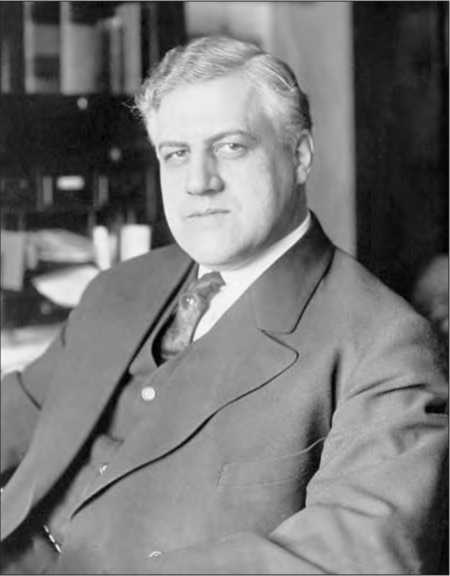The Event: Brief period during which postWorld War I public hysteria fueled by Russia’s Bolshevik Revolution led to government harassment of radicals, trade unionists, and political dissidents—particularly those of foreign birth, many of whom were deported Date: 1919-1920

A. Mitchell Palmer before he became U. S. attorney general. (Library of Congress)
Significance: Growing out of efforts to silence antiwar voices during World War I, the Red Scare became a means of justifying government repression and disregard for civil liberties against revolutionary, labor, and pacifist groups. The assault fell hardest on immigrant laborers and sought to divide presumably loyal, native-born workers from less-trustworthy foreign-born workers.
After American entry into World War I in early 1917, a number of developments combined to create the conditions for a red scare that would result in illegal searches and seizures and ultimately the deportation of hundreds of immigrants without due process of law. Active antiwar agitation, led by the Socialist Party, among others, was attacked as being akin to giving aid and comfort to the enemy. Moreover, the comparatively large number of German Americans who were active in radical movements made it easier to paint a picture of disloyal and ungrateful immigrants.
In 1917, the U. S. Congress passed the Espionage
Act to create a legal tool for suppressing any kind of action that could construed as interfering with the national war effort. A year later, it passed the Sedition Act of 1918, which allowed the government to punish any form of speech expressing disloyalty toward or abuse of the government. The government’s readiness to enforce these draconian laws was increased by the success of the radical Bolshevik Revolution of October, 1917, an event that greatly alarmed American industrialists. By the following year, the postmaster general was ordering the confiscation from the U. S. mails massive amounts of Socialist Party literature, which he had publicly burned.
Into this climate of fear and suppression of civil liberties came A. Mitchell Palmer, the U. S. attorney general under President Woodrow Wilson. Palmer was determined to rid American society of all political radicals. In August, 1919, Palmer established the antiradical General Intelligence Division with the U. S. Department of Justice. He appointed as its head a very young J. Edgar Hoover, the future long-term director of the Federal Bureau of Investigation. Hoover promptly began assembling an elaborate card index of radical organizations, publications, and leaders.
In November, 1919, agents working under Hoover raided the headquarters and branches of a labor society known as the Union of Russian Workers. Throughout the United States, state and local officials carried out smaller actions, which came to be known as Palmer raids, on suspected radicals. While these raids were going on, members of Congress began introducing bills to deport foreign radicals. When 249 foreign deportees were placed aboard an old army transport ship to be returned to Europe, the ship was dubbed the “Soviet Ark” in the news media. The last and largest of what became known as the Palmer raids were carried out in January, 1920. Afterward, antiradical hysteria abated, and the Red Scare ended.
Ethnic and racial prejudices seemed to feed the Red Scare hysteria, as Russians, Italians, Germans, and Jews were singled out as unworthy of American residence. Another prime target of the Red Scare was trade unionists, particularly immigrants, leftist militants, and even those who merely went out on strike. During the height of the Red Scare, one U. S. senator even went so far as to propose sending radicals who were native-born American citizens to a penal colony that was to be established on Guam.
The antiradical paranoia spread by much of the mainstream press contributed to harassment, physical attacks, and even murders of immigrants. Eventually, however, the increasingly extreme claims made about radical threats tended to backfire and dampen public antiradical fervor. Some historians have suggested that the end of the Red Scare can be dated to May 1, 1920, when A. Mitchell Palmer predicted a massive communist uprising that never materialized.
William A. Pelz
Further Reading
Ackerman, Kenneth. Young J. Edgar Hoover: The Red Scare and the Assault of Civil Liberties. New York: Da Capo Press, 2008.
Gengarelly, W. Anthony. Distinguished Dissenters and Opposition to the 1919-1920 Red Scare. Lewiston, N. Y.: Edwin Mellen Press, 1996.
Murray, Robert K. Red Scare: A Study in National Hysteria, 1919-1920. Reprint. Minneapolis: University of Minnesota Press, 2009.
Post, Louis F. The Deportations Delirium ofNineteen-Twenty. 1923. Reprint. Seattle: University Press of the Pacific, 2003.
See also: Alien and Sedition Acts of 1798; Deportation; Espionage and Sedition Acts of 1917-1918; German immigrants; Goldman, Emma; Jewish immigrants; Labor unions; Russian and Soviet immigrants; Sacco and Vanzetti trial; World War I.




 World History
World History









